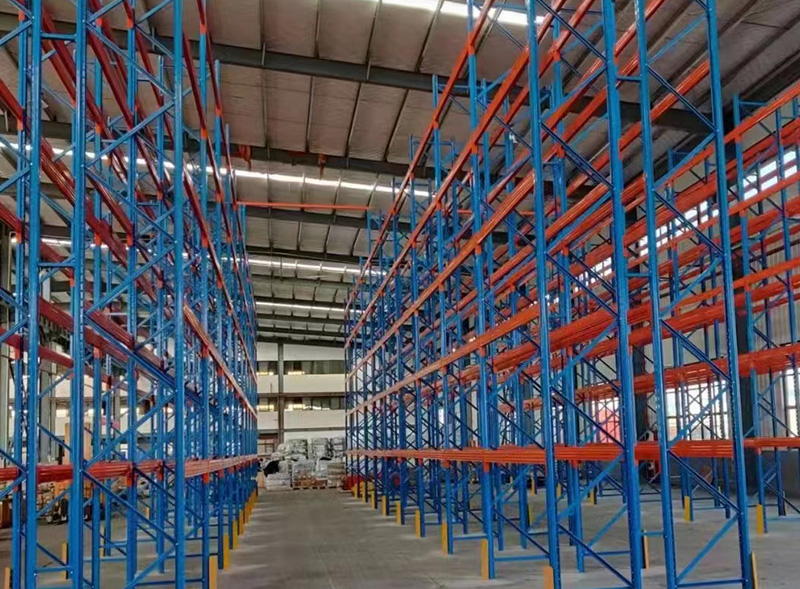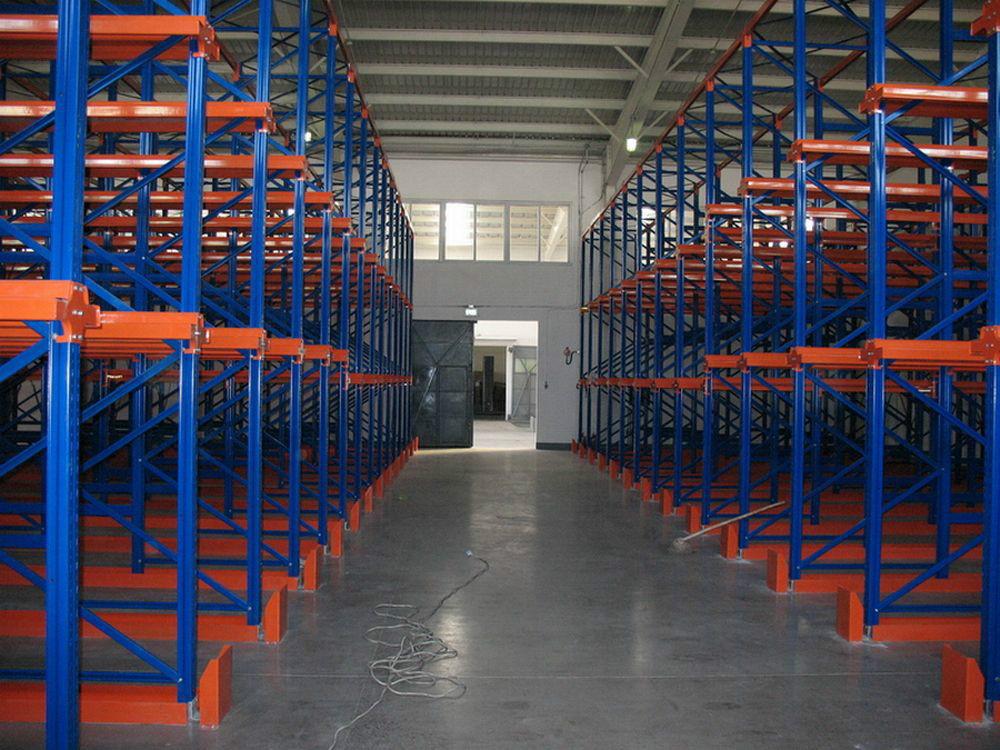In the bustling world of logistics, warehousing, manufacturing, and retail, efficient space utilization is paramount. Enter rack systems – the often unsung heroes that transform chaotic storage areas into models of organization and accessibility. Far more than just metal frameworks, modern rack systems are engineered solutions designed to maximize vertical and horizontal space, enhance inventory management, improve safety, and ultimately boost operational efficiency. This comprehensive guide delves into the essential aspects of rack systems, exploring their critical importance, diverse types, key selection factors, and the substantial benefits they deliver.

Understanding the Critical Role of Rack Systems
At its core, a rack system is a structured storage solution designed to hold materials, goods, or products in an organized and accessible manner. They move beyond simple shelving by enabling the storage of heavier loads, larger items (like pallets), and optimizing the use of a facility's cubic space – floor to ceiling. The fundamental purpose of rack systems is to provide:
Order: Creating designated, identifiable locations for every SKU or item type.
Accessibility: Allowing for efficient loading and retrieval, often supporting methods like FIFO (First-In, First-Out) or LIFO (Last-In, First-Out).
Density: Storing more goods within a given footprint by utilizing vertical space.
Protection: Safeguarding stored goods from damage caused by stacking, forklift impacts, or environmental factors.
Safety: Providing stable and secure storage, reducing risks associated with falling loads or disorganized aisles.
Without effective rack systems, warehouses and storage areas quickly descend into inefficiency, facing issues like lost inventory, slow order picking, damaged goods, safety hazards, and wasted real estate. Investing in the right rack system is an investment in the core operational flow of any business handling physical goods.
Why Rack Systems are Indispensable for Modern Operations
The importance of well-designed rack systems extends far beyond basic storage. They are foundational to several critical operational facets:
Maximizing Real Estate Value: Commercial and industrial space is expensive. Rack systems dramatically increase storage capacity per square foot by leveraging vertical space often left unused. This deferral of the need for larger facilities translates into significant cost savings.
Enhancing Inventory Visibility and Control: Organized rack systems, especially when integrated with warehouse management systems (WMS) and labeling, provide clear visibility into stock levels and locations. This accuracy is crucial for efficient cycle counting, reducing shrinkage, and fulfilling orders correctly and promptly.
Improving Labor Efficiency: Efficiently designed rack systems minimize travel time for workers and forklifts. Logical layouts, wide aisles where needed, and accessible storage locations streamline picking, put-away, and replenishment processes, directly impacting productivity and labor costs.
Ensuring Safety Compliance: Professionally engineered and installed rack systems are designed to handle specific loads safely. They incorporate features like load beams, upright protectors, and seismic bracing (where required) to prevent collapses. Organized storage also reduces trip hazards and forklift collision risks.
Supporting Scalability and Flexibility: Modular rack systems can be reconfigured, expanded, or even relocated relatively easily as business needs, inventory profiles, or operational processes evolve. This adaptability is vital in dynamic business environments.

Exploring the Diverse Landscape of Rack System Types
Not all storage challenges are the same, and thankfully, neither are rack systems. Selecting the right type is crucial for optimal performance. Here's an overview of the most common configurations:
Selective Pallet Racking: The undisputed workhorse of warehouses. This versatile rack system allows direct access to every pallet load stored within it. Pallets are typically placed on horizontal load beams supported by vertical upright frames. Its key advantage is 100% accessibility, making it ideal for high-SKU environments with frequent turnover. Variations include conventional single-deep and space-saving narrow-aisle designs.
Drive-In/Drive-Thru Racking: Designed for high-density storage of large quantities of similar products. Forklifts drive directly into the rack system lanes to place or retrieve pallets, which are stored on rails. Drive-In (LIFO - Last-In, First-Out) has an entrance at one end. Drive-Thru (FIFO - First-In, First-Out) allows access from both ends. This rack system sacrifices some accessibility for maximum space utilization.
Push Back Racking: A high-density LIFO solution. Pallets are stored on wheeled carts nested on inclined rails. When a new pallet is loaded, it pushes the previous pallets back. Retrieving the front pallet allows the next one to roll forward. This rack system offers better selectivity than drive-in while still providing good density, typically 2-5 pallets deep.
Pallet Flow Racking: A high-density FIFO rack system utilizing gravity. Pallets are loaded onto an inclined rail system at the higher end and flow forward to the pick face at the lower end. Rollers or wheels facilitate movement. Ideal for high-volume, fast-moving SKUs requiring strict rotation (e.g., perishables, lot-controlled items).
Cantilever Racking: Specifically designed for long, bulky, or awkwardly shaped items that don't fit standard pallet racks – pipes, lumber, furniture, rolls of carpet, steel bars. Features vertical columns with horizontal arms projecting outwards. This rack system provides excellent accessibility from the sides.
Mobile Racking (Mobile Aisle): A space-saving powerhouse. Entire sections of racks are mounted on motorized carriages that move along rails embedded in the floor. Only one aisle is open at any time, accessed by moving the racks. This rack system can nearly double storage density compared to static selective racking but involves a higher initial investment and requires specialized operation.
Mezzanine Systems (Integrated with Racking): While technically a platform, mezzanines often integrate seamlessly with rack systems underneath and around them, creating multi-level storage or operational areas within the same footprint. This leverages vertical space beyond just rack height.
Key Factors to Consider When Choosing a Rack System
Selecting the optimal rack system requires careful analysis of several interrelated factors:
Inventory Characteristics: What are you storing? Consider dimensions (pallet size, item length), weight per unit load, fragility, compatibility with handling equipment (forklift type, reach), and any special requirements (refrigeration, hazardous materials).
Storage Density vs. Accessibility Needs: This is often the core trade-off. High-density systems (Drive-In, Push Back, Flow) store more pallets per square foot but offer less immediate access to every pallet. Selective racking offers full accessibility but lower density. Analyze your SKU velocity and pick frequency.
Throughput Velocity and Handling: How quickly do goods move in and out? High-throughput facilities often prioritize accessibility (selective racking or flow racking for fast movers). Slower-moving inventory might benefit from high-density solutions. Consider the type and capabilities of your material handling equipment (forklift reach, aisle width requirements).
Facility Constraints: Measure your available space meticulously – building height, floor area, column positions, door locations, and floor load capacity. Consider ceiling clearances for sprinklers and lighting. Ensure the chosen rack system fits within these physical parameters and complies with local building codes.
Budget and Total Cost of Ownership (TCO): Factor in not just the initial purchase and installation cost of the rack system, but also ongoing costs: maintenance, potential reconfiguration, operational efficiency gains/losses, and the value of the space saved. A slightly more expensive system that drastically improves efficiency can offer a better ROI.
Safety and Compliance: The rack system must be professionally engineered for the specific loads and seismic zone (if applicable). Installation must follow manufacturer specifications. Consider safety accessories like rack guards, column protectors, safety netting, and proper aisle marking. Regular inspections are mandatory.
The Tangible and Intangible Benefits of Implementing Rack Systems
Investing in a well-designed rack system delivers a multitude of significant advantages:
Radically Increased Storage Capacity: The primary benefit. Utilizing vertical space efficiently can often double or triple storage capacity within the same footprint compared to floor stacking. This directly reduces the need for costly facility expansion or relocation. Rack systems are the key to unlocking this potential.
Enhanced Operational Efficiency and Productivity: Organized storage drastically reduces the time workers spend searching for items. Efficient picking paths, faster put-away, and optimized replenishment become possible. Rack systems designed for specific workflows minimize unnecessary movement and handling, accelerating throughput.
Improved Inventory Accuracy and Management: Clearly defined locations within the rack system, especially when integrated with barcoding or RFID and a WMS, make inventory tracking far more precise. This reduces errors in picking, shipping, and receiving, leading to better customer satisfaction and lower inventory carrying costs.
Reduced Product Damage: Storing goods securely on racks prevents crushing, deformation, and contamination that often occurs with unstable floor stacking. Features like beam locks and upright protectors further safeguard inventory from handling equipment impacts.
Enhanced Workplace Safety: A properly installed and maintained rack system, combined with clear aisles and organized storage, significantly reduces hazards. Risks of falling loads, collapsing stacks, and forklift collisions are minimized. Safety accessories integrated into the rack system add further protection for personnel and inventory.
Scalability and Adaptability: Modular rack systems can grow and change with your business. Adding bays, increasing height (if clearance allows), or reconfiguring layouts is relatively straightforward compared to fixed infrastructure. This future-proofs your storage investment.
Improved Space Utilization and Cleaner Environment: Efficient rack systems eliminate wasted space and create a cleaner, more organized warehouse. This not only improves operational flow but also enhances the overall working environment and can make a positive impression on visitors or auditors.
Rack systems are far from a simple commodity purchase; they are a strategic investment in the backbone of your storage and logistics operation. Choosing the right rack system – one that aligns perfectly with your inventory profile, operational workflows, facility constraints, and business goals – unlocks substantial value. From maximizing expensive real estate and boosting productivity to enhancing inventory control and ensuring workplace safety, the benefits are undeniable.
Whether you're setting up a new warehouse, optimizing an existing facility, or expanding operations, dedicating the necessary time and expertise to selecting, engineering, installing, and maintaining your rack systems is crucial. Partnering with experienced rack system suppliers and consultants can ensure you implement a solution that delivers optimal performance, safety, and return on investment for years to come. In the competitive landscape of modern business, an efficient rack system is not just an advantage; it's a fundamental necessity.







